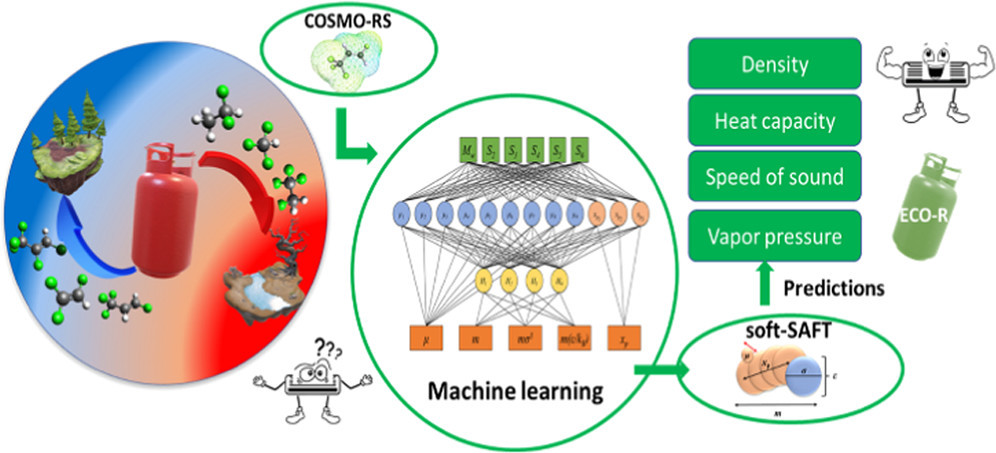
The search for novel clean refrigerants remained elusive until the principles of green chemistry and engineering came to the rescue, coupled with artificial intelligence to speed up the process.
In the 1990s, the hole in the planet’s ozone layer was a pressing global crisis. Research discovered the ozone layer over Antarctica was thinning due to chlorofluorocarbons (CFCs) used globally in aerosols and cooling devices. Once ubiquitous, CFCs were quickly banned during the 1990s and early 2000s because of their harmful environmental impacts, prompting the search for cleaner and more efficient alternatives.
Hydrofluorocarbons were introduced — refrigerants that contain no chlorine and are not harmful to the ozone layer. However, their impact on global warming is significant compared with traditional refrigerants, leading to regulations limiting their use too. Today’s commercially available refrigerants are third-generation refrigerants, but they remain detrimental to the environment, leading to the hunt for fourth-generation refrigerants that are clean, efficient, and safe.
A team of researchers from Khalifa University and Universita Rovira I Virgili, Spain, has developed a novel integrated approach to evaluate new potential refrigerants using a machine-learning algorithm. The team’s model maps the relationships between molecular descriptors with the molecular parameters required to meet the thermodynamic properties of an efficient and environmentally friendly novel refrigerant.
Prof. Lourdes Vega, Director of the KU Research and Innovation Center on CO2 and Hydrogen (RICH), Ahmad Darwish, and Ismail Alkhatib, chemical engineering PhD candidates, collaborated with Carlos Alba and Dr. Felix Llovell to develop the model, with their results published in the journal Industrial and Engineering Chemistry Research.
Any new refrigerant must be environmentally friendly, meet safety requirements, and offer sufficient technical performance. According to the research team, the first two criteria are dependent on refrigerant atomic composition and structure. Discarding those refrigerants unable to meet environmental and safety standards is a simple first layer of screening for the perfect new refrigerant. The third criterion — excellent technical performance — is harder to screen for as it relies on detailed knowledge of the refrigerant’s thermodynamic properties. This is the main hurdle in the commercialization of new refrigerants.
Rather than individually test each option, systematic screening using computational simulations can be an efficient way to determine which refrigerants have the best potential. Developing these simulations, however, requires extensive databases of the relevant properties of known substances and too many refrigerants and blends are being developed for these databases to keep up.
“The standard experimental route to obtaining property measurements has ceased to be capable of meeting the rapidly growing number of newly developed refrigerants,” Prof. Vega said. “This has accelerated the need for predictive computational modeling tools for evaluating the thermodynamic behavior of these refrigerants and obtaining the relevant properties required for technical evaluation. Plenty of tools have been developed, but it’s difficult to assess the adequacy of one thermodynamic model over another as all of these models suffer from some limitation or another. We need a singular universal model.”
Integrating machine learning with molecular-modelling approaches has paved the way for a number of applications, including the rational design of new green materials, predicting thermodynamic behavior of complex systems, and accelerating the development of molecular simulations. Prof. Vega and the research team have leveraged this paradigm for their work.
The team’s model predicts the molecular parameters of pure refrigerants and was applied to 18 third- and fourth-generation refrigerants for testing. These 18 refrigerants were chosen for testing because the team already had access to the experimental data needed to train the machine learning algoriths. Additionally, the third-generation refrigerants were those currently used in the market, and the fourth-generation refrigerants had demonstrated potential to serve as sustainable alternatives with excellent environmental performance. Using these refrigerants allowed the team to prove the model could work and demonstrate a step toward a more predictive framework for estimating refrigerant options.
The developed framework was built using a machine-learning artificial neural network to predict the parameters of the refrigerants using molecular descriptors previously obtained. This way, even in the absence of experimental data, the predictive power of the model could assess whether a refrigerant would perform well.
“Of course, our model could be enhanced using larger datasets for training, but that’s the point of the work,” Prof. Vega said. “Our results showcase the potential of this novel integrated approach for the first technical evaluation of newly developed refrigerants, even in the absence of sufficient experimental data. It’s a first step in facilitating the search for green alternatives that meet technical and environmental requirements for fourth-generation refrigerants.”
Jade Sterling
Science Writer
25 July 2022






